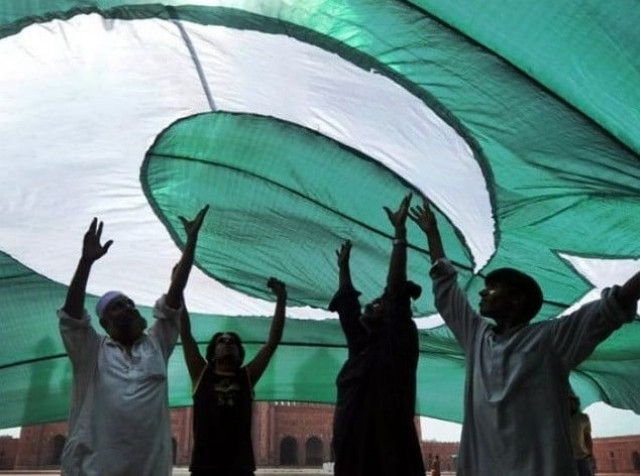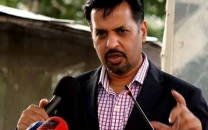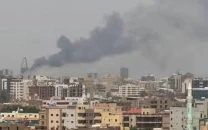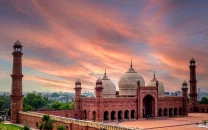Naya or Purana Pakistan
Nation goes to polls to elect their representatives for next five years

The curtain finally rises on the general elections as the nation prepares to go to the polls today. Despite delays and political hiccups, Pakistanis will now cast their votes, electing new national and provincial legislatures and ushering in a fresh constitutional journey.
The road to these elections has been riddled with challenges with echoes of the past haunting the present. The 2018 polls had seen PML-N supreme leader Nawaz Sharif caught in the cross hairs. However, this time around, the PTI chief, Imran Khan, and his party are facing a crackdown.
The elections were earlier scheduled for November last year as the previous National Assembly was dissolved days before it could complete its term in August, 2023. However, unforeseen events threw out unexpected plot twists.
Soon after a caretaker government was sworn in, the Election Commission of Pakistan (ECP) announced that it could not hold general elections in the 90-day constitutional timeframe as it would have to conduct fresh delimitation of constituencies in view of a digital census that the outgoing political government notified in the last week of its term.
The ECP later announced holding polls in the last week of January without specifying its exact date. However, the polls oversight authority had to announce the date of election in consultation with the president on November 3, 2023 only after the intervention of the Supreme Court.
The Supreme Court later also removed some other legal hurdles to the general elections, which some forces including some political parties like JUI-wanted deferred to a later date for various reasons including inclement weather in the northern parts of the country and security issues.
Apparently, a restive political climate is the only thing that has remained unchanged between the two general elections.
In view of a highly polarized environment coupled with security challenges, the Election Commission of Pakistan (ECP) has deployed security forces to perform duties as defined in Article 245 (functions of Armed Forces) of the Constitution.
The police will be the first-tier responders, followed by the civil armed forces as the second tier, and the armed forces as the third tier. The armed forces are being deployed outside the most sensitive polling stations.
The role of the security forces has become all the more important after the recent surge in violent attacks targeting election candidates and political entities, especially in Balochistan and Khyber-Pakhtunkhwa provinces.
Chief Election Commissioner (CEC) Sikandar Sultan Raja recently admitted in an official statement that there are security challenges; that the law and order situation is deteriorating in two provinces, and the poll body’s offices as well as political meetings are being attacked just ahead of polls.
The CEC, having all the time to ensure free and fair elections and foolproof security arrangements, simply termed “terrorism as the biggest enemy of the electoral process”.
Parties and independents
In the political ring, heavyweight contenders like the PML-N, the PPP, the MQM-P, the JUI-F, the PML-Q, the TLP, the JI, the ANP as well as others regional and religious parties vie for victory.
For the general election 2024, the ECP has allocated election symbols to 150 political parties.
Read: How elections can shape the future
The PTI, though in the contest, faces unique challenges as the ECP deprived it of its iconic election symbol, the cricket bat, forcing its candidates to run as independents. This, the PTI leaders and experts say, can open the window for horse-trading post elections.
The Free and Fair Election Network (Fafen) states that as many as 111 political parties have nominated 275 women candidates to contest the upcoming elections on general seats, making up 4.6 percent of the total of 6,037 candidates.
Voters and candidates
Nevertheless, over 128 million registered voters out of a total 241.4 million population would elect members for 266 National Assembly and 593 provincial assemblies’ seats.
Out of the total 128,585,760 voters, constituting over half of its total population, over 69 million (69,263,704) male and over 59 million (59,322,056) female voters of Islamabad, Punjab, Khyber Pakhtunkhwa, Sindh and Balochistan would put democracy to its latest test.
According to Fafen, this indicates an increase in the proportion of voters within the population, rising from 49.6 percent in 2018 to 53.2 percent in 2024.
Between the last two general elections, Fafen said, the number of registered voters increased by 27.4 percent, from 86,189,828 in 2013 to 106,000,239 in 2018. Since then, the number of registered voters has increased by 22 million (21.7%), reaching 128,585,760. These include 12.5 million women.
A staggering total of 5,121 candidates, including 4,807 males, 312 females, and two transgender individuals – representing a diverse spectrum of parties and ideologies – are vying for the 266 general seats in the National Assembly.
Simultaneously, 12,695 candidates, comprising 12,123 males, 570 females, and two transgender persons, are contesting the 593 general seats across the four provincial assemblies. Voting for both the national and the provincial assemblies will be held on the same day.
Polling stations and booths
The ECP has set up a total of 90,675 polling stations across the country including a total of 25,320 polling stations for men, 23,950 for women and 41,405 combined polling stations.
The ECP has established 50,944 polling stations in Punjab, out of which 14,556 will be for men, and 14,036 for women, while 22,352 polling stations will be for both men and women.
There will be 19,006 polling stations in Sindh, including 4,443 for men, 4,413 for women and 10,250 joint polling stations. Khyber-Pakhtunkhwa will have 15,697 polling stations, including 4,810 for male, and 4,286 for female voters. There will be 6,601 combined polling stations in K-P.
Balochistan will have 5,028 polling stations, including 1,511 for men, and 1,317 for women. The number of joint polling stations in the province is 2,200.
The ECP data shows that there will be 276,398 polling booths across the country, including 147,552 polling booths for men and 127,846 polling booths for women.
In total, there will be 149,434 polling booths in Punjab, 65,005 in Sindh, 47,077 in Khyber-Pakhtunkhwa, and 14,882 in Balochistan.
Young voters
Fafen states that the distribution of voters across age groups demonstrates that voters under the age of 35 constitute 44 percent of the total electorate.
Within the age brackets, the largest proportion of voters falls within the 26-35 range. In the younger category of 18-25, the proportion of voters is notably lower at 18 percent.
These figures may indicate a combination of factors such as under-registration and a decline in population growth rates over time.
Subsequently, the 36-45 age group comprises 22 percent of the registered voters. The 46-55 age category has 14 percent of voters, while a mere nine percent fall into the 56-65 age group. Lastly, individuals aged 65 and above account for 10 percent of voters.
Turnout and expected outcome
In the 2018 general elections, the turnout was 51 percent, meaning only half of the country’s voters came out to cast their votes. As admitted and explained by politicians and experts, no party is in a clear position to gain majority in the National Assembly, saying it can lead to a hung parliament, again.
The only thing that can change predictions, they say, is the turnout of the voters on the polling day.





1675249047-0/image-(18)1675249047-0-208x130.webp)













COMMENTS
Comments are moderated and generally will be posted if they are on-topic and not abusive.
For more information, please see our Comments FAQ